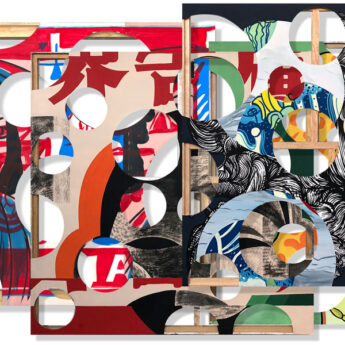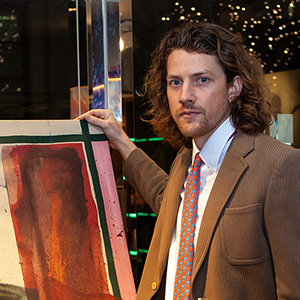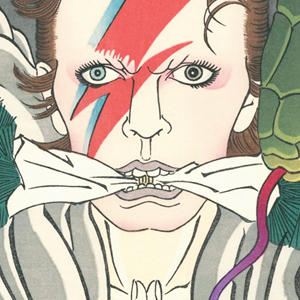Review of Francis Bacon’s Tokyo exhibition
Is God an accountant or a butcher?” This question, in a modern comedy I once attended, resonates in my mind. I remember an intense dialogue between a man and a woman, with nothing else on stage except two chairs.
“That’s rubbish!” might have been the answer of Francis Bacon (1909–1992), the artist often mistaken for a descendant of the 16th century English philosopher with the same name who, ironically, died while experimenting with the effects of freezing on the preservation of meat in 1626.
Bacon, the artist, was fascinated with slaughterhouses, meat and Christian triptychs.
Just as in the play I had seen, a simple piece of furniture—a chair or sofa—is a common visual signature in Bacon’s paintings and is used to introduce the presence of the human body. Before he started his professional career as an artist, Bacon worked as an interior designer.
In one of his paintings, a screaming woman lies naked on a sofa. The bodies in his works are often twisted, fragmented, dislocated, decentred and, perhaps, abused by the eye. Although far from the classical proportion of the human figure commonly seen in Renaissance paintings, it is not totally unrelated to its classical sources. Bacon’s favourite painter was Diego Velázquez (1599–1660), an influential 17th century Spanish artist.
With Bacon, the squeezed, organic, carnal existence of his subjects is often trapped or caged in geometric constructions; he always drew the frame of a cube or a box to conceal the body. This is, again, a typical visual signature of the painter.
The more I recognised the repetitive visual signatures—chairs, twisted bodies and boxes—the greater grew my appreciation of the striking contrast between the forms and the colours that capture all the visual elements.
As spotlights serve on stage, Bacon’s colours cast light and shadow into the opaque darkness and dramatically project the body—often surrounded by a dense red, orange or dark blue flat background—to the viewer.
In his triptychs, Bacon’s visual constructions of kinetic action—which, while defying a timeline, have a cinematic approach similar to that seen in the photographs of Eadweard Muybridge (1830–1904)—tell a story, or an anti-story, of the artist’s inner urge to paint, form, shape, express or harass. But so what?
Bacon’s sexuality could be associated with the theme of his paintings. Was it, then, his forbidden lust that drove his accurate creation?
Bacon lived in a conservative British society where homosexuality was officially illegal until 1967. Thus, was it his anger towards rules that suppressed his individuality? Or, rather, was it actually anger towards mediocrity?
He despised academic education in the fine arts, believing that it inhibited the artistic nature of students. Yet, it cannot be denied that he had a secret admiration for classical forms of beauty in art.
While his motivation for creating works of art could be complex or simple, the interpretation of his artistic creations must be left to the observer.
As can be seen from a photograph of his Reece Mews Studio in London, Bacon seems to have created his visions out of chaotic space. Perhaps chaos made perfect sense to him. I find that chaos creates a tremendous contrast between the sense of order in his paintings and their surroundings. There is a beauty in this absurdity that only a painting can create: desperate, joyous and intense.
The Francis Bacon exhibition is being held at the National Museum of Modern Art, Tokyo until 26 May.
http://bacon.exhn.jp or
www.momat.go.jp
03-5777-8600





